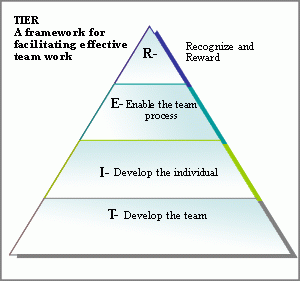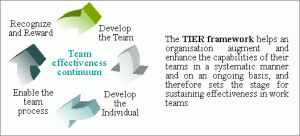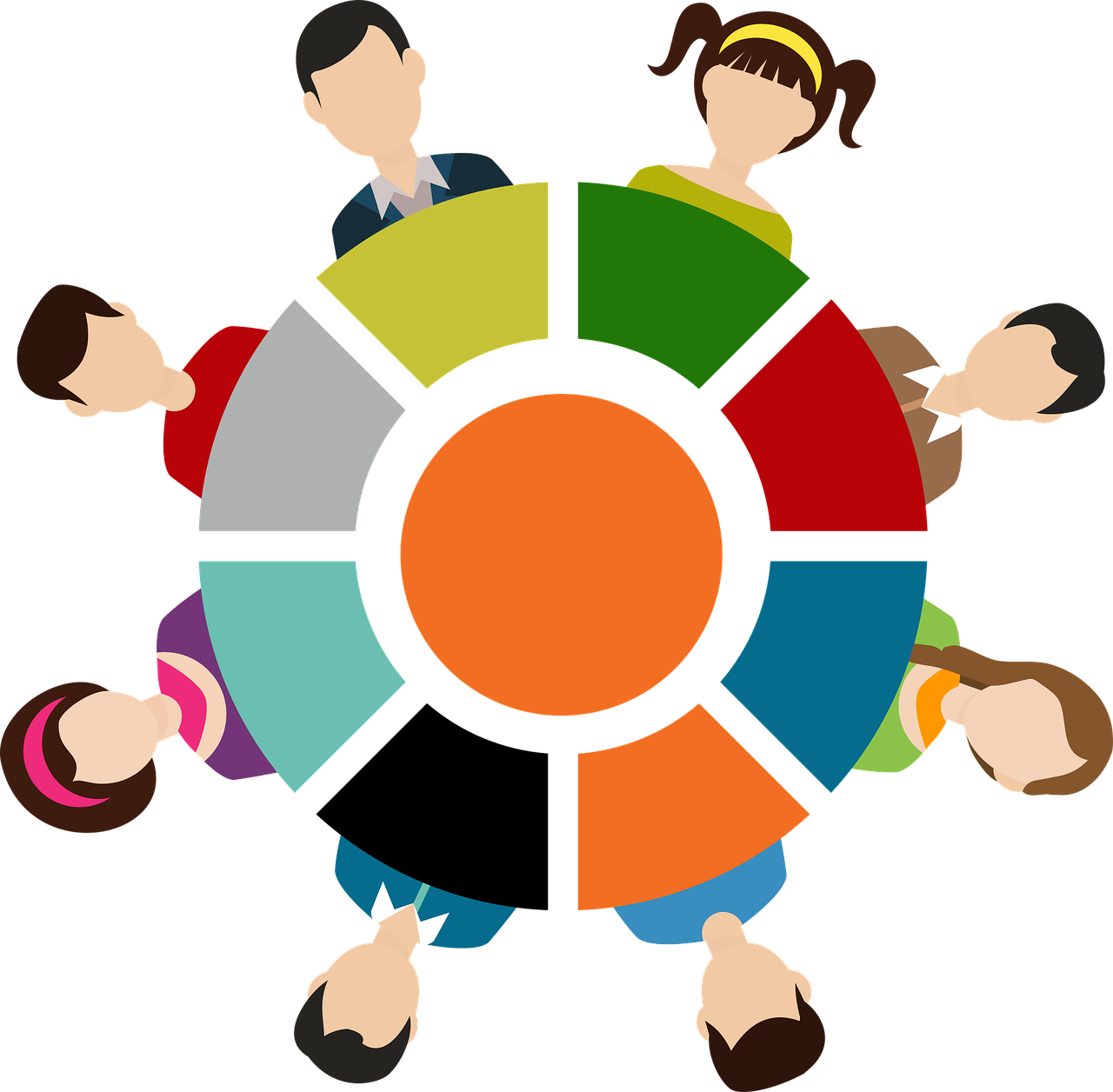We hear of examples of excellent teamwork on a particular project and how well a team performed on a certain task, but as we all know, one-off performances don’t count for much in the corporate world. As they say, you are only as good as your last performance. If the team does a bad job on the next project and falls off its pedestal, then the team will be put under a magnifying glass to gauge what’s wrong and who is responsible. It is therefore important to aim for measures that can help a team sustain its performance. The diagram below illustrates key issues that an organisation should address in order to infuse effectiveness in teams:

TIER is a simple frame-work that any organisation can easily apply to stimulate effective teamwork. TIER comes into the picture after you put together a team-mix that you believe has the right composition of expertise, experience, and personality traits to suit the project or business task set out. Once a team has been formed, you basically keep adding layer upon layer of organisation input to facilitate a consistently high performance:
- Layer 1: You invest in developing the team on a continuous basis.
- Layer 2: You pay attention to individual progress.
- Layer 3: You steer the team in the right direction by setting the framework for the team process.
- Layer 4: You monitor progress and develop methods to recognise and reward both the team and the individual in order to motivate, inspire and enthuse them to greater performance heights.
Here’s how you put TIER into action:
- T: Develop the Team. Design team building programs and experiential workshops that provide guidance on issues such as team behaviour, cohesion and teamwork.
- I: Develop the Individual. Facilitate ongoing job training, upgrade skills regularly, and offer scope for personal growth.
- E: Enable the Team Process. Steer a team in the right direction by clarifying roles, specifying business objectives and encouraging discussion and good productive conflict to optimise the team output.
- R: Recognise and Reward. Recognise and reward both the individual effort and team effort. Good teamwork deserves a pat on the back and so does outstanding individual contribution.
- As mentioned earlier, developing the team through team building activities is an ongoing undertaking since there are different stages in team building. Also, as new and ever evolving team building programs spring up all the time, they have to be introduced to the team to improve team effectiveness further.
- Developing the individual through training and skills improvement programs has to be ongoing to bring every individual up to speed on the fast changing technological and process developments around the world.
- Enabling the team process also has to happen continually. With every new project that the team is assigned to, you have to clarify the task and the organisation expectations. You have to spell out the roles and responsibilities of each team member on that task.
- Recognition and reward is part and parcel of team management to keep the teams and high performing individuals motivated and driven.
- TIER is meant to facilitate effective teamwork on a sustained basis but none of the four organisation inputs suggested in TIER are out of the ordinary, new or unknown in the corporate world. They are all issues that have been around for decades. But the key lies in going about it in a concerted and systematic manner and focusing on result oriented input. It has to be planned and executed in a manner that induces and extracts the best possible results from the teamwork. The scope of TIER is explained in further detail below:Develop the Team There are various stages in team development. It all starts with breaking the ice and getting the communication going. Then various team effectiveness issues have to be addressed through ongoing team building activities. There are issues such as building trust, goal setting, decision making, accepting and managing change, creativity, out-of-the-box thinking, cohesion, and so on.Develop the Individual
When you build the individual you simultaneously strengthen the team. The investment that an organisation makes in an individual in the area of training and development could range from teaching proprietary techniques and upgrading job related expertise, to skills development or soft skills training. The aim should be to effectively develop the individual so that the team performance is sustained in the long run.
Enable the Team Process
Poor role clarity and poor understanding of organisation objectives are two key factors often cited as reasons why a team becomes ineffective. The starting point in enabling good teamwork on a consistent basis is to ensure that there is absolutely no ambiguity what so ever. Whether that is in the team’s understanding of their roles and responsibilities or their understanding of the overall organisational goals that the teamwork has to support.
The other concern area that is usually assumed to stand in the way of effective teamwork is conflict and improper conflict resolution. There is good and bad conflict. Divergent viewpoints and disagreements during the course of discussing a strategic issue can actually be classed as productive conflict. This can be healthy for the team since disagreements often provide a means to explore various ‘problem–solution’ alternatives. When there are differing perspectives within a team it helps the team examine the issue thoroughly before arriving at recommendations. An important aspect of enabling good teamwork is to encourage frank and open discussions so that the output from the team is truly based on the collective thinking and experience of all the team members.
Recognise and Reward
It is importance for the top management of an organisation to recognize and reward individual contribution in order to encourage each individual to do his or her best in contributing to the team effort. Rewards are motivators and provide a psychological stimulus that can drive people to strive harder and aim for excellence. When a team does well at a task, a word of appreciation can work wonders for team spirit and enthusiasm. Team recognition boosts team morale and heightens motivation levels on future projects. It creates a sense of camaraderie among the team members and the collective thrill that the team feels reflects positively in their work. Therefore, both types of recognition are important and give you the same result, i.e. they enhance motivation levels and provide a stimulus for a better team performance.
Sustaining Effective Team
Though TIER is a process which requires layer upon layer of organisation input, it is actually a continual process, which is why it works so well in sustaining effectiveness in teams. It is this continued effort that fosters consistently high performance in teams.

Here’s how the continuum works:
1. Sustaining Effective and Efficient Teams in a Competitive Corporate World
2. Don’t Take the “I” Out of Teamwork
 Team Building Portal
Team Building Portal